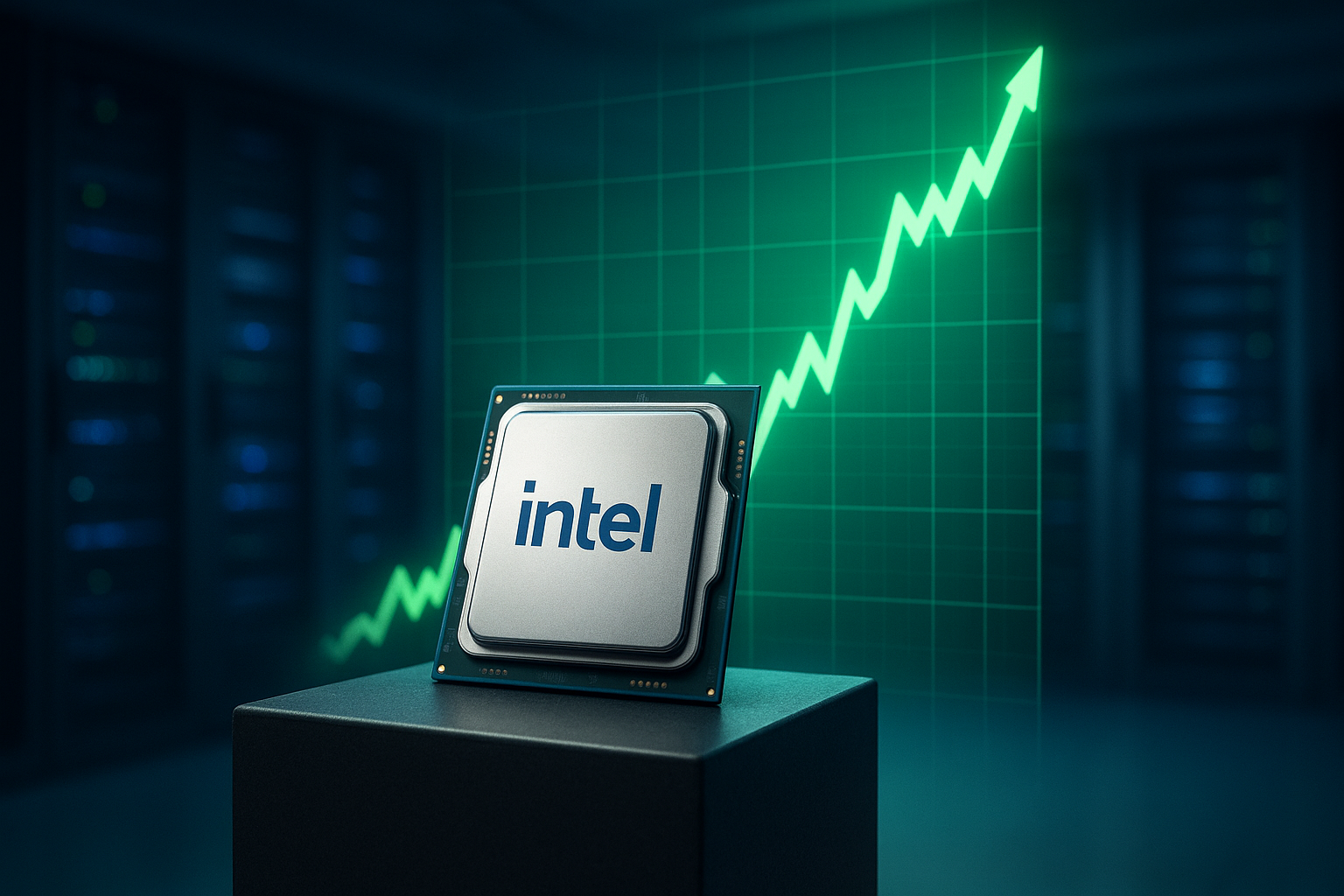Wall Street loves nothing more than a redemption arc, and Intel just delivered one heck of a plot twist. The chip giant—yes, the same one many analysts had mentally relegated to tech's history books—posted third-quarter numbers that sent its stock shooting up nearly 8% in after-hours trading.
The bare facts: $14.2 billion in revenue (beating expectations) and earnings of $0.27 per share (crushing the anticipated $0.20). But c'mon, this isn't really about a single quarter's performance.
It's about vindication.
For years now, Intel has been the sad trombone of the semiconductor world. The company that once defined computing seemed to have missed the AI revolution entirely while Nvidia—remember when they were just "that gaming chip company"?—soared to a trillion-dollar valuation.
Pat Gelsinger, Intel's CEO and resident turnaround artist, has been methodically rebuilding this particular Rome without much fanfare. I've watched his presentations since he took over in 2021, and there's always been this undercurrent of "just you wait" energy that frankly, most of Wall Street dismissed.
Here's the thing about tech comebacks—they rarely follow clean narratives. The messy middle period (where Intel has been firmly stuck) gets little attention until suddenly... it doesn't.
The company's Gaudi AI accelerators aren't exactly household names, but they're gaining traction at precisely the moment data centers are desperate for anything that can handle generative AI workloads. Their new Xeon processors with built-in AI capabilities are finding their way into server racks across the industry. None of this happened overnight.
I call it the "technological leapfrog effect." Companies dominating one era often face existential threats during major shifts, but their deep engineering benches and customer relationships give them the ability to bounce back—if (and it's a big if) they can adapt quickly enough.
Remember IBM in the '90s? Written off as a mainframe dinosaur before reinventing itself as a services powerhouse. Intel seems to be pulling off something similar, combining manufacturing revival through its IDM 2.0 strategy with aggressive moves into discrete GPUs and those AI accelerators I mentioned.
Look, conventional wisdom says once a tech company falls behind, it's game over. But semiconductor history shows something different. AMD was on life support in the early 2010s before becoming the darling it is today. Nvidia was once considered an also-ran compared to ATI (remember them?).
It's not all champagne and ticker tape for Intel, obviously. Their manufacturing technology, despite improvements, still lags behind TSMC. Their gross margins hit 45.8% this quarter—better, but nowhere near their glory days. And let's be real: AMD keeps eating their lunch in data centers, while Nvidia remains the undisputed heavyweight champ of AI training chips.
But markets work on differentials, not absolutes.
Intel doesn't need to become the AI chip kingpin overnight; it just needs to prove it belongs at the table. This quarter suggests exactly that—hence the stock jump.
The funny thing about tech investors? Their memories are shorter than a TikTok video. The same analysts who were writing Intel's obituary will likely start penning comeback stories if the next few quarters show similar momentum. That's how these narratives flip—with whiplash-inducing speed once data starts shifting.
For those thinking long-term, the real question is sustainability. Gelsinger's ambitious bet on U.S. manufacturing, bolstered by CHIPS Act funding (a policy shift I've been tracking since its inception), represents a fascinating counter to the industry's decades-long infatuation with fabless models and Asian production.
In semiconductors—a business I've been covering since before "AI" became the most overused acronym in tech—yesterday's laggard can become tomorrow's leader with remarkable speed.
Sometimes the old champions still have a few good fights left in them. Intel might just be proving that point.
